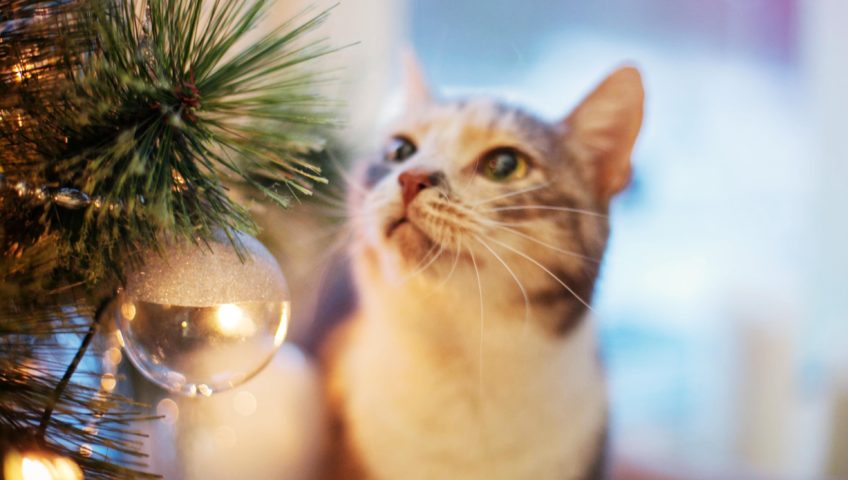
It’s that time of year: Sleigh bells are jingling and ring-ting-ting-a-ling, chestnuts are roasting on open fires, and bright-nosed reindeer are gearing up to make their holiday rounds. But before you rock around your Christmas tree this holiday season, you ought to consider the pests that might be lurking inside of and around it.
So what can you do to protect your Christmas tree and keep pests out of your home? Let’s start with…
Baby-proofing your Christmas tree
Pests come in all shapes and sizes, and there are numerous ways to keep bugs away. As much as we love our little tykes, children and Christmas trees do not go hand in hand. Until little kids understand the etiquette of not messing with Christmas trees, it’s best to take precautions to keep your kids––and your trees––safe. The main thing to protect against is your child accidentally pulling the tree over onto themselves.
If you’re willing to compromise on tree height, you can set the tree on a tall table to put it out of reach, where an unknowing child can’t grab onto it. You might also weigh the base down. The last alternative is to put a safety gate around the tree for as long as it’s up. Aside from that, put all of the breakable ornaments you care about above child grabbing range, or you might have a sentimental disaster on your hands.
Pet-proofing your Christmas tree
With dogs, it’s pretty simple. As long as they aren’t chewing the tree up itself, all you have to do is put breakable ornaments above tail-wagging height. Dogs who have trouble with assaulting the tree can be kept at bay with the safety gate method above. Cats, however, are trickier. Make sure the tree has a heavy, secure base so it’s less likely to fall, and when you water it, make sure the tree’s water container can’t be easily accessed. Christmas tree water runs the risk of poisoning your cat, as it’s toxic to them.
Consider spritzing your tree with Bitter Apple, a spray that’s odorless to humans but that cats detest. When you’re setting up your tree, give your cat a chance to check it out before the ornaments are up, so you can gauge how it will react to the tree. Consider having a spray bottle on hand as necessary to show the cat that your tree is out-of-bounds. Once you’ve set it up, put boring, more durable ornaments on the bottom, and consider foregoing the tinsel––it can and will cause blockage or intestinal tears if your cats (or kids) ingest it.
Pest-proofing your Christmas tree
The last pests you need to protect your tree from are… actual pests. Bringing a live tree into your home once a year ensures that you will also be bringing live bugs into your home once a year. Aphids, mites, mantids and a host of other bugs live on pine and fir trees, and the best way to ensure that they don’t get free reign of your house is to ensure they never get into your house in the first place.
The best way to do this is without any chemicals or sprays: many Christmas tree lots provide the use of mechanical tree shakers, which will dislodge nests, egg clusters and many of the bugs living on your tree. Shaking it vigorously by hand can also help in this.
Fortunately, there are very few bugs that live in Christmas trees that can actually harm your family, but if you consider them a nuisance, Diatomaceous Earth or neem oil can be used to coat the tree and kill any insects. It is absolutely not recommended to use aerosol sprays on your Christmas tree, as they are highly flammable and could cause a fire in your home.
So, there you have it. Christmas can be stress-inducing for even the most seasoned of holiday celebrators, so it’s important to do everything you can to take the danger out of decorating. Deck the halls, but do so safely!




